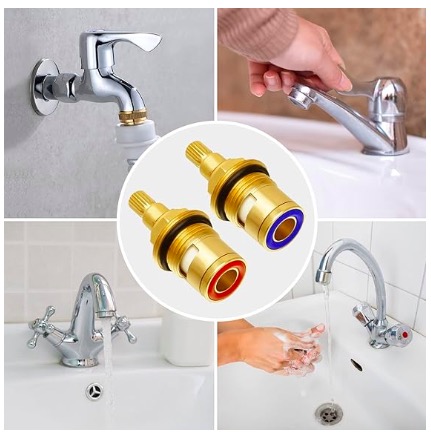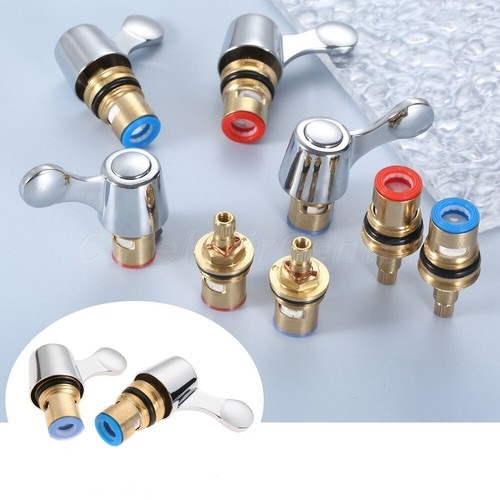Leaky faucets and poor water control often come down to one tiny part — the cartridge.
A brass ceramic cartridge is a key component inside a faucet that controls water flow and mixing, using ceramic discs housed in a brass body for smooth, drip-free operation.
Brass Ceramic Cartridge, we also call brass ceramic disc cartridge, ceramic valve core, or brass spindle. In the faucet business, I’ve seen it many times: clients choose a stylish body but overlook the core — the cartridge. If you’re a buyer or supplier of plumbing fittings, understanding brass ceramic cartridges is essential for ensuring product performance and long-term customer satisfaction.
What does a ceramic cartridge do?
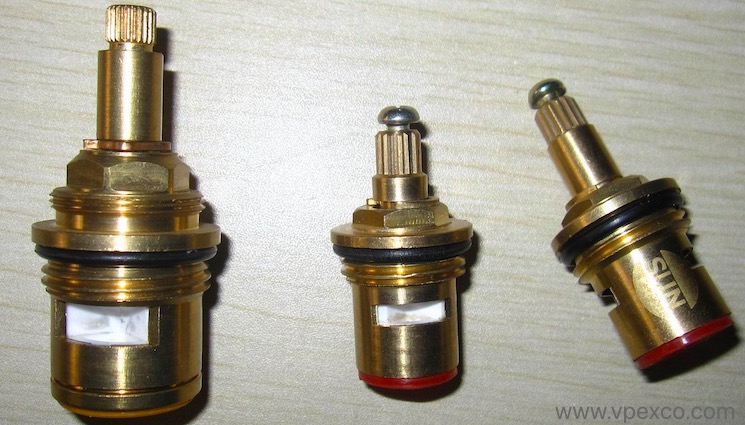
Most faucet problems don’t come from the body or handle — they come from what's inside.
A ceramic cartridge controls the flow and temperature of water1 in faucets using two polished ceramic discs that rotate against each other.
The bottom disc remains fixed, while the top disc rotates when the user turns the handle. This rotation either aligns or blocks holes in the discs, allowing water to pass or stop. It offers precise control with minimal wear and tear, even after thousands of uses.
How it Works — Simple Breakdown:
- Closed Position: Holes in the discs don’t align. Water is blocked.
- Open Position: Holes align, water flows through.
- Rotating for Mixing: For mixers, rotation adjusts hot/cold balance.
Benefits of Ceramic Technology:
| Feature | Benefit |
|---|---|
| Frictionless seal | Smooth operation, less wear |
| No rubber washers | Reduces leak risks over time |
| High durability | Over 500,000 cycles without failure |
| Water-saving | Precise control reduces unnecessary flow |
I remember one client from Canada who switched from rubber-washer faucets to ceramic cartridges for his retail brand. He called me later and said, “Complaints dropped by 70% in the first year.”
What is the meaning of ceramic cartridge?
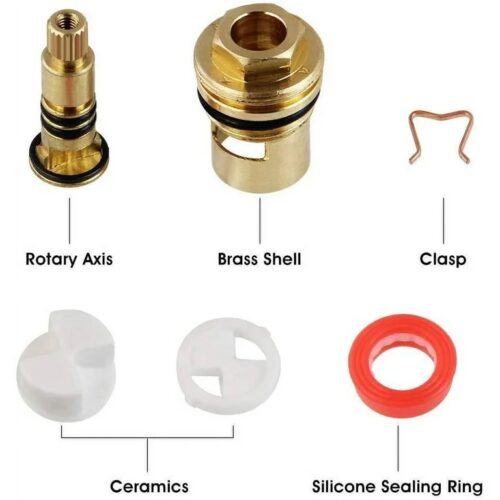
Inner Structure of Ceramic Cartridge
Many buyers get confused between "ceramic valves" and "ceramic cartridges" — but they’re not the same.
A ceramic cartridge is a water control mechanism using two ceramic discs to start, stop, and mix water inside a faucet or tap.
The term “cartridge” refers to the whole self-contained unit, usually made up of:
- Two ceramic discs (one fixed, one movable)
- A stem or handle connector
- Sealing components
- A protective housing (brass or plastic)
When we say “brass ceramic cartridge,” we’re talking about a cartridge where the outer shell is made of brass for added durability, stability, and resistance to water pressure.
Ceramic Cartridge Variants:
| Type | Material | Application |
|---|---|---|
| Plastic ceramic cartridge | Plastic shell | Budget faucets, short lifespan |
| Brass ceramic cartridge | Brass shell | Premium mixers, long-lasting |
| Thermostatic cartridge | Brass + sensors | High-end showers, temp control |
When sourcing, many buyers think plastic versions will do — but for markets like Europe, North America, or commercial buildings, a brass body is considered the standard for reliability.
Are ceramic faucet cartridges better?
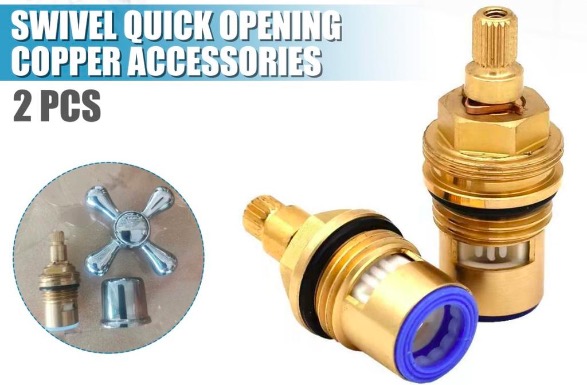
Ceramic Cartridge
If you’re still buying faucets with rubber washers, it’s time to upgrade.
Yes, ceramic faucet cartridges are better than traditional rubber washer systems because they last longer, don’t drip, and require less maintenance.
Why Ceramic is Better:
| Feature | Ceramic Cartridge | Rubber Washer Valve |
|---|---|---|
| Lifespan | 500,000+ cycles | 10,000–50,000 cycles |
| Leak resistance | High | Medium to low |
| Operation | Smooth rotation | Requires full turning |
| Temperature resistance | Up to 90°C (brass shell) | Lower tolerance |
| Maintenance | Minimal | Frequent washer replacement |
From my experience with distributors, 90% of their warranty issues were due to leaking rubber washers. Once they switched to ceramic cartridges, they saw a huge drop in customer complaints — and an increase in positive reviews.
When is a Ceramic Cartridge a Must?
- Luxury faucet lines
- Commercial/public restrooms
- Hard water areas
- Long-term residential projects
Buyers looking for long-term performance and fewer returns should always go for brass ceramic cartridges over older designs.
How to Test the Quality for the Brass Ceramic Cartridge?
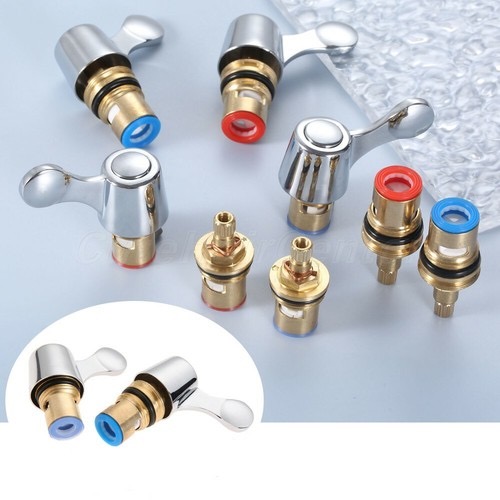
Brass Ceramic Cartridge Testing
Looks can be deceiving. A shiny cartridge doesn’t always mean good quality.
To test a brass ceramic cartridge, check material thickness, disc movement, leakage under pressure, and endurance using a cycle test machine.
Field Testing Checklist:
1. Material & Weight
- A solid brass body should feel heavier than plastic or thin brass-plated types.
- Inspect for full brass thickness (not just the bottom ring).
2. Disc Smoothness
- Rotate the stem by hand.
- Movement should be smooth and tight — no loose feel or stiffness.
3. Water Pressure Test
- Use a test bench to apply standard water pressure (8–10 bar).
- Check for leaks at side seals and under the stem.
4. Endurance Cycle Test
- Use a cycling machine to simulate 500,000 open-close movements.
- Observe wear on ceramic discs and sealing.
5. Dimensional Accuracy
- Ensure the cartridge fits tightly into standard faucet cavities.
- Incorrect tolerances will lead to leaks even if the cartridge itself is good.
My Sourcing Tip:
When I help clients source faucet cartridges from China, I always request:
- Weight report (grams)
- Cycle test report
- Raw material certificate
- Dimension drawing with tolerances
That’s the only way to ensure quality before mass production.
A brass ceramic cartridge is the heart of a faucet. It ensures drip-free performance, long lifespan, and smooth operation — making it the smart choice for any quality plumbing product.
-
Exploring this topic will enhance your knowledge of faucet functionality and improve your plumbing skills. ↩



